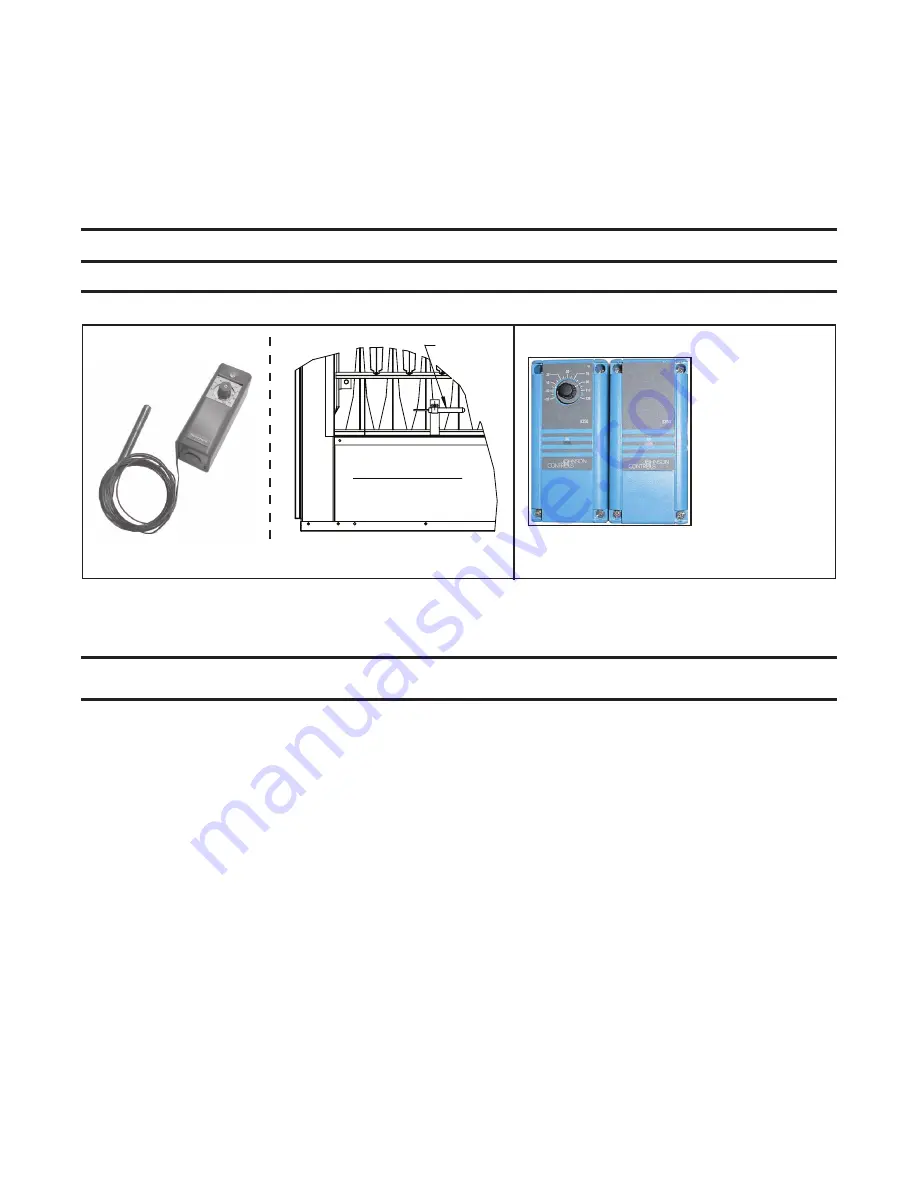
52
SSCBL-RPBL-IOM (10-22) 149159-C
CONTROLS—CONTINUED
Optional Ductstat with Remote Temperature Selector (Option AG15 , AG17, or AG19)
Two-stage makeup air options that are controlled from a sensing probe with a remote electronic temperature selector
have a temperature operating range to 130°F . The sensing probe and remote modules (see
shipped separately for field installation . Follow the wiring diagram with the unit and the manufacturer’s instructions for
wiring and installing the remote modules . Depending on the staging provided, there will be one module for selecting
temperature and one to five stage-adder modules . The digital display module is optional .
⚠ CAUTION ⚠
Ensure that the heat/cool selector switch on the remote temperature selector is positioned to
Heat
.
Ductstat Bulb
Typical Duct Furnace
Front (Discharge) View
DETAIL A: OPTIONS AG3, AG4, AND AG5
(A) Remote
Temperature Selector
(B) Stage-Adder
Module
(A)
(B)
DETAIL B: OPTIONS AG15, AG17, AND AG19
Figure 37. Ductstat Options
Optional Electronic Modulation
NOTE: Unit sizes 400, 700, 800, 1050, and 1200 with electronic modulation require a minimum
natural gas supply pressure of 6 IN WC.
The type and capability of the electronic modulation system depends on the option selected . Electronic modulation
options are identified by a suffix to the serial No . printed on the heater rating plate . AG7 is identified as MV-1, AG8
is identified as MV-3, AG9 is identified as MV-4, AG21 is identified as MV-A, AG39 is identified as MP-1, and AG40
is identified as MP-2 . AG39 and AG40 are available only on unit size 400 . AG41 is identified as MP3 and AG42 is
identified as MP4 . Both AG41 and AG42 apply only to unit sizes 500, 600, 800, and 1200 .
Electronic Modulation Between 50% and 100% Firing Rate (Option AG7, AG8, or AG9)
•
Depending on the heat requirements established by the thermistor sensor, the burner modulates between 100%
and 50% firing . The thermistor is a resistor that is temperature-sensitive in that as the surrounding temperature
changes, the Ohms resistance changes through the thermistor . This change is monitored by the solid-state control
center (amplifier) that furnishes varying DC current to the modulating valve to adjust the gas input .
•
Each modulating valve is basically a regulator with the electrical means of raising and lowering the discharge
pressure . When no DC current is fed to this device, it functions as a gas pressure regulator to supply 3 .5 IN WC
pressure to the combination gas valve .
•
Refer to the wiring diagram provided with the furnace for proper wiring connections .
•
Electronic modulation for heating that is controlled by a specially-designed room thermostat (60–85°F) is identified
as option AG7 .
•
Electronic modulation for makeup air application that is controlled by a duct sensor and temperature selector
(55–90°F) is identified as option AG8 or AG9 . The temperature selector setting for option AG8 is on the amplifier
(see
) . Option AG9 has a remote temperature selector . Both systems are available with an override
thermostat .








































